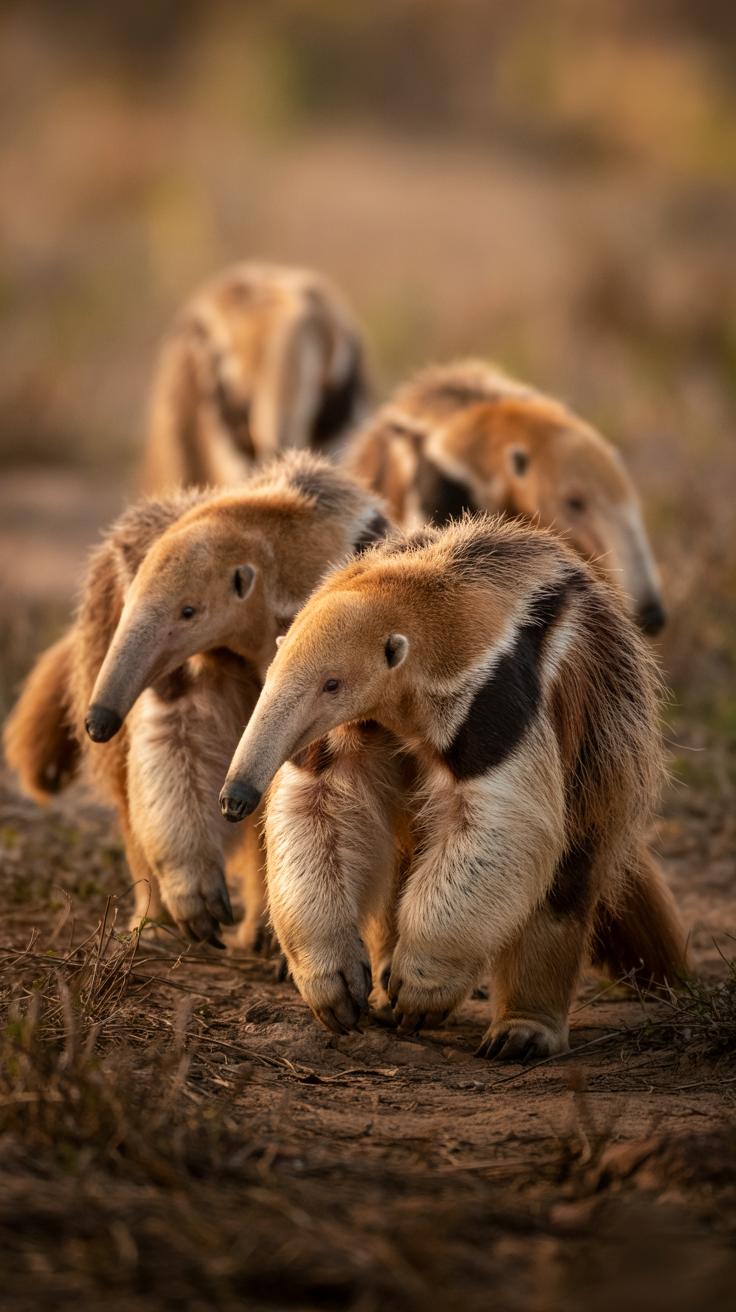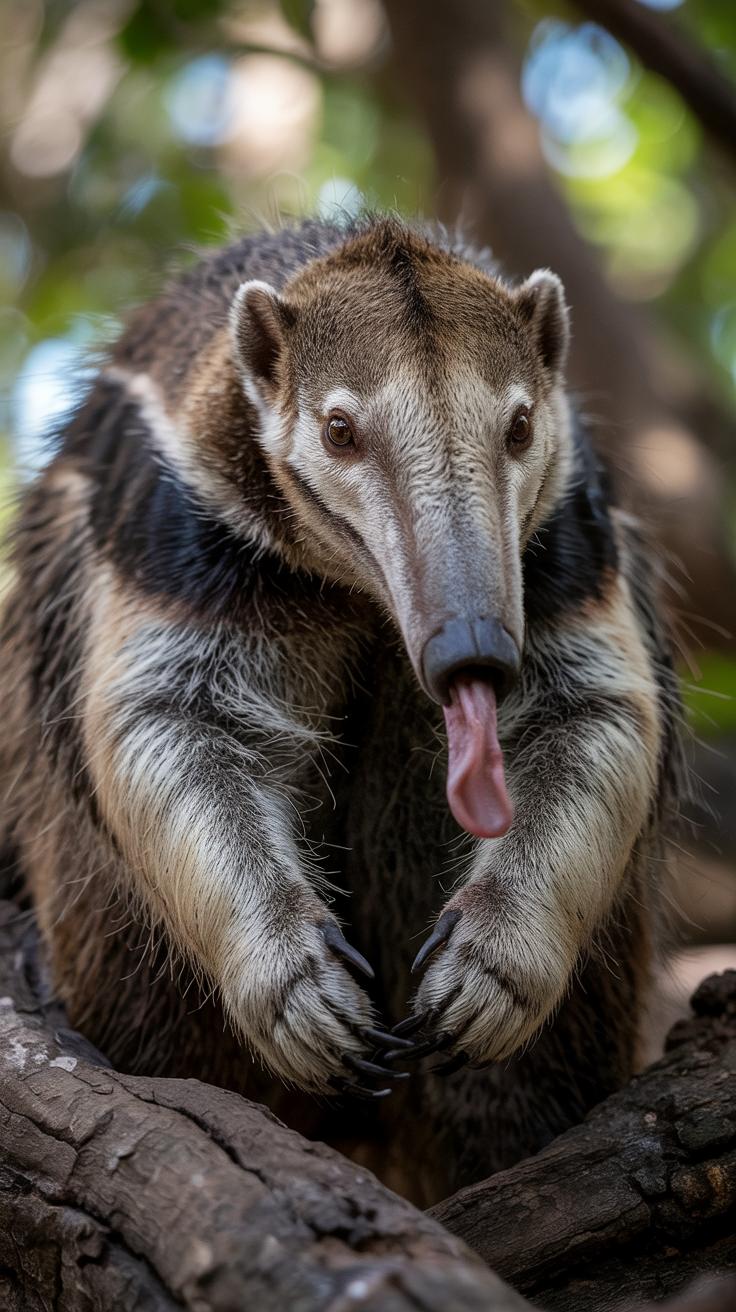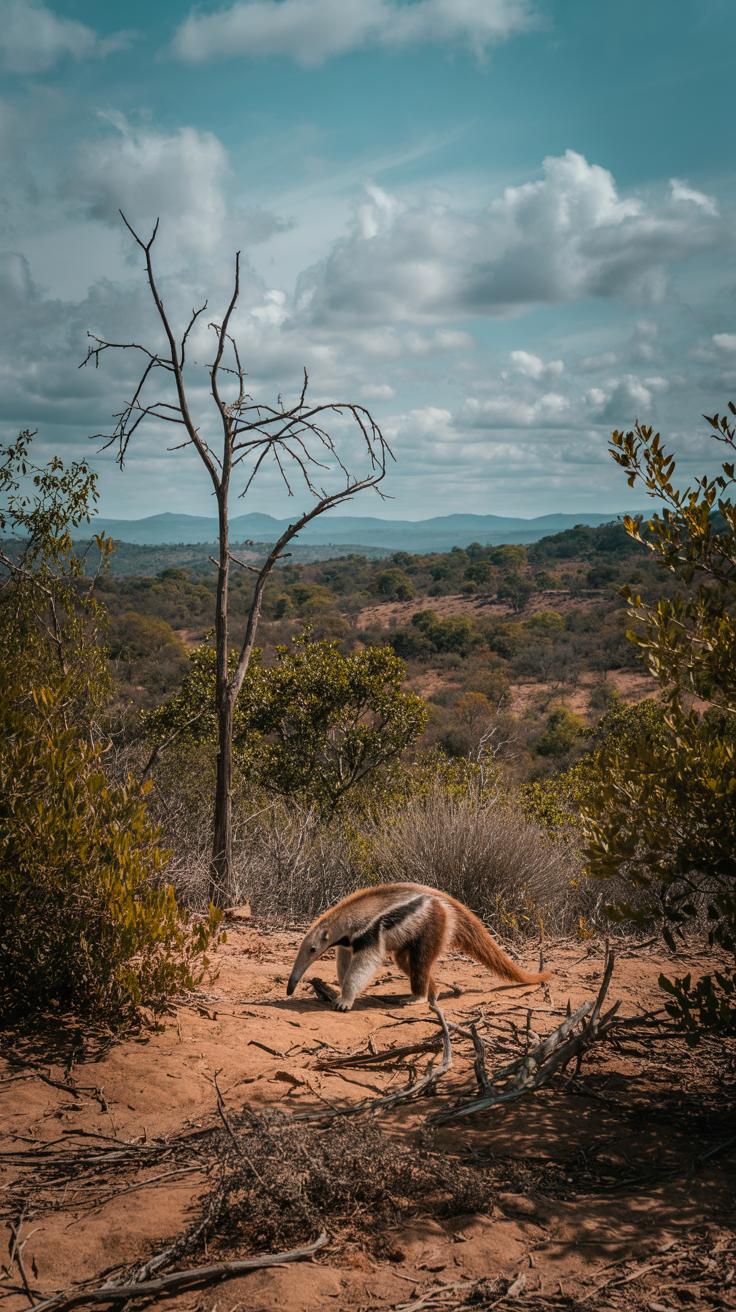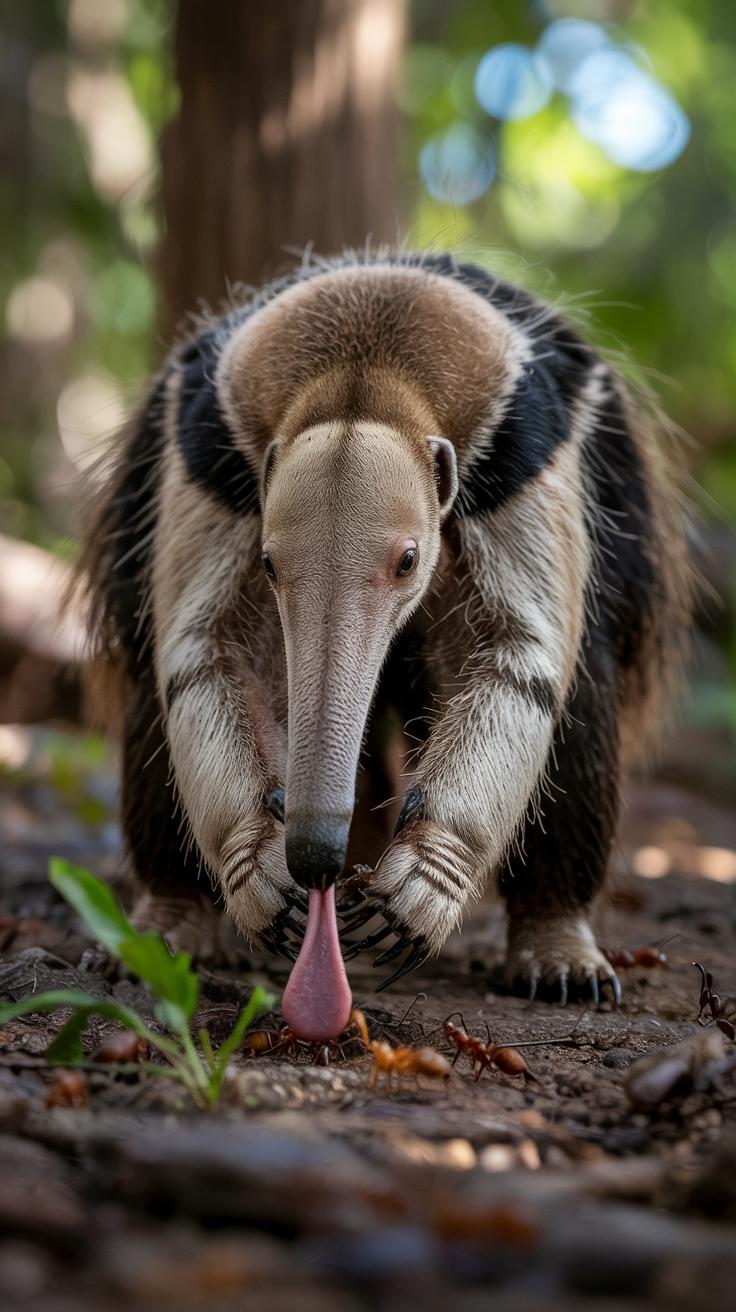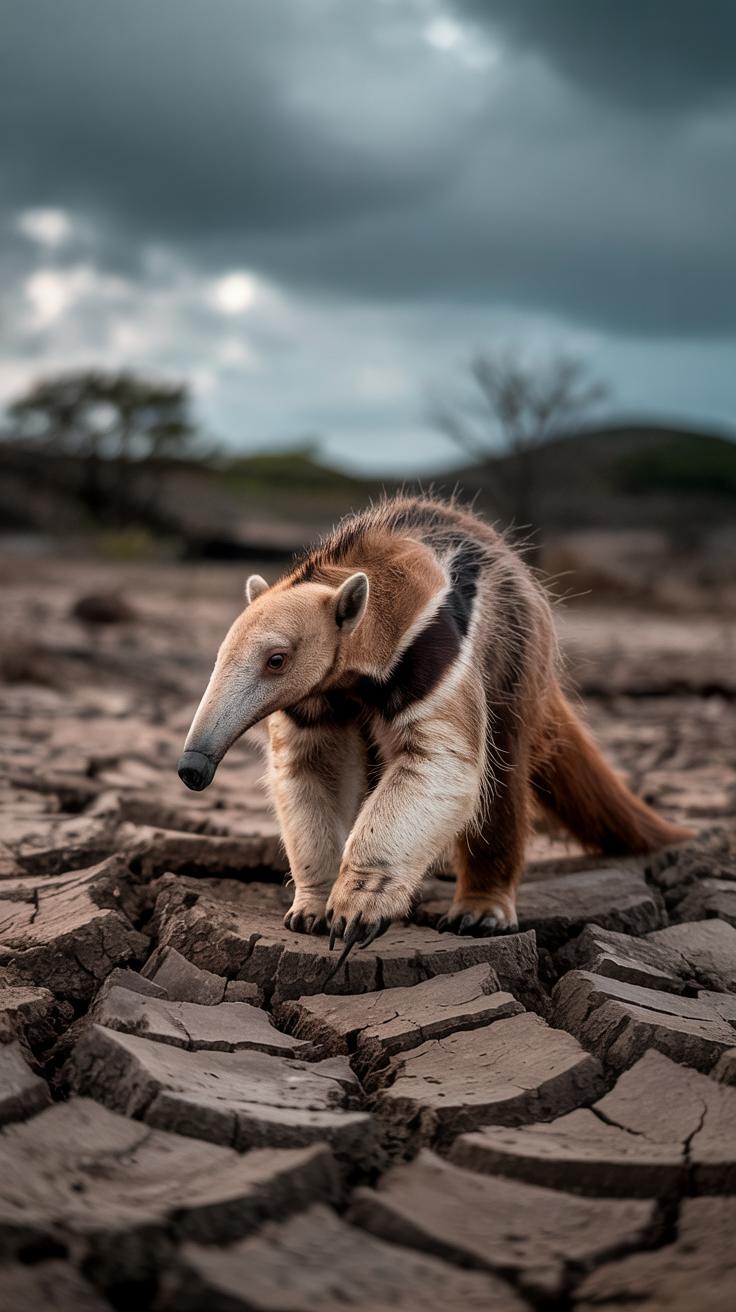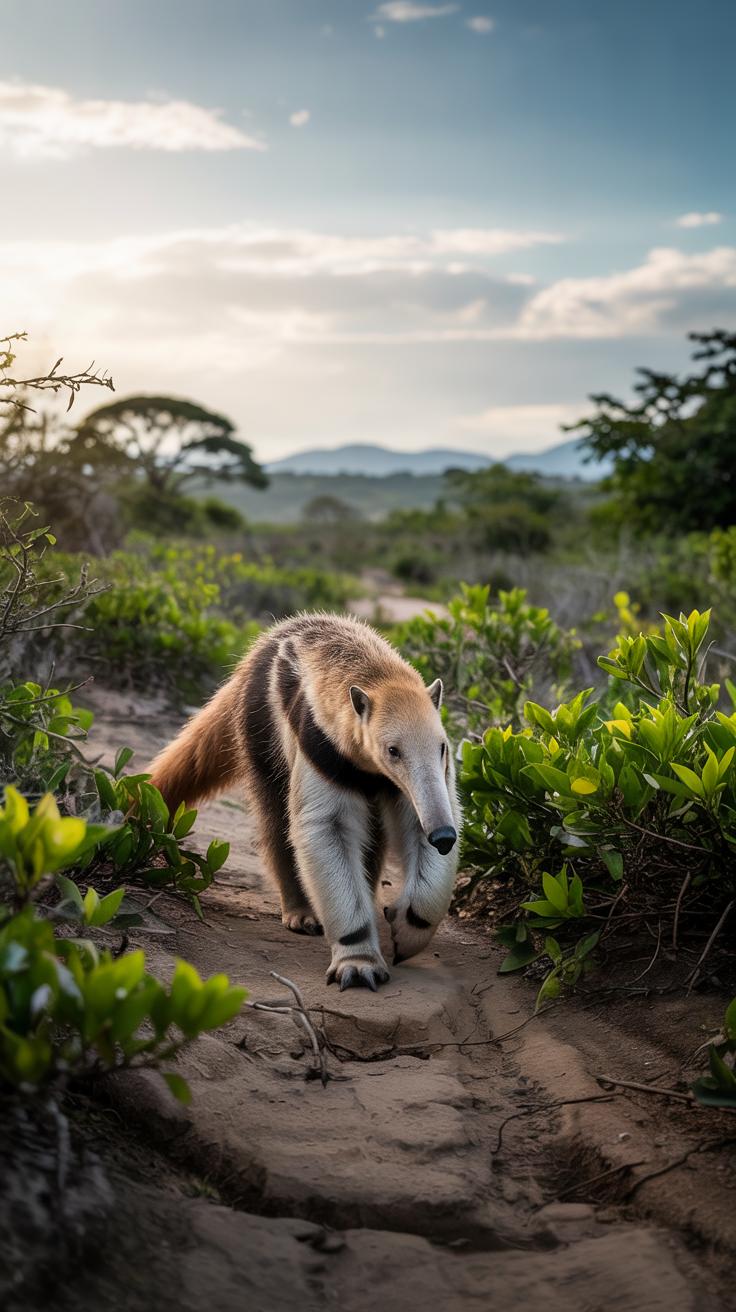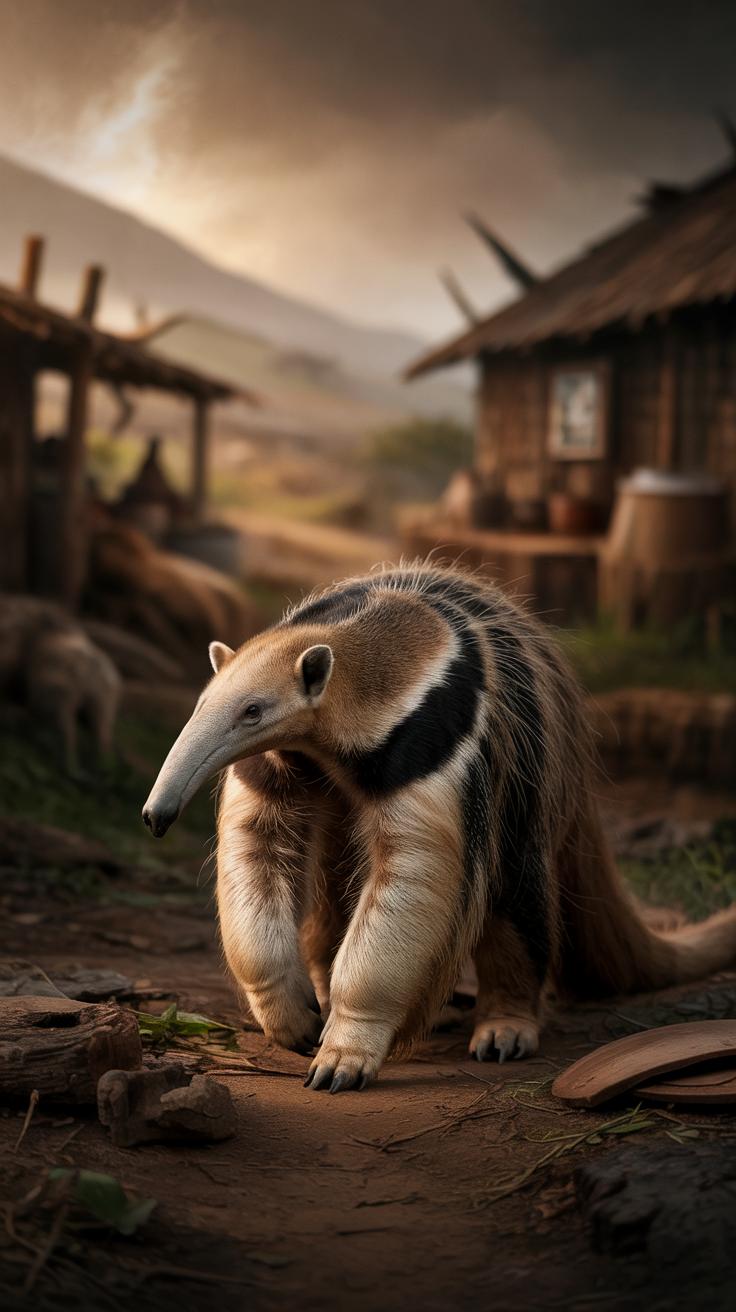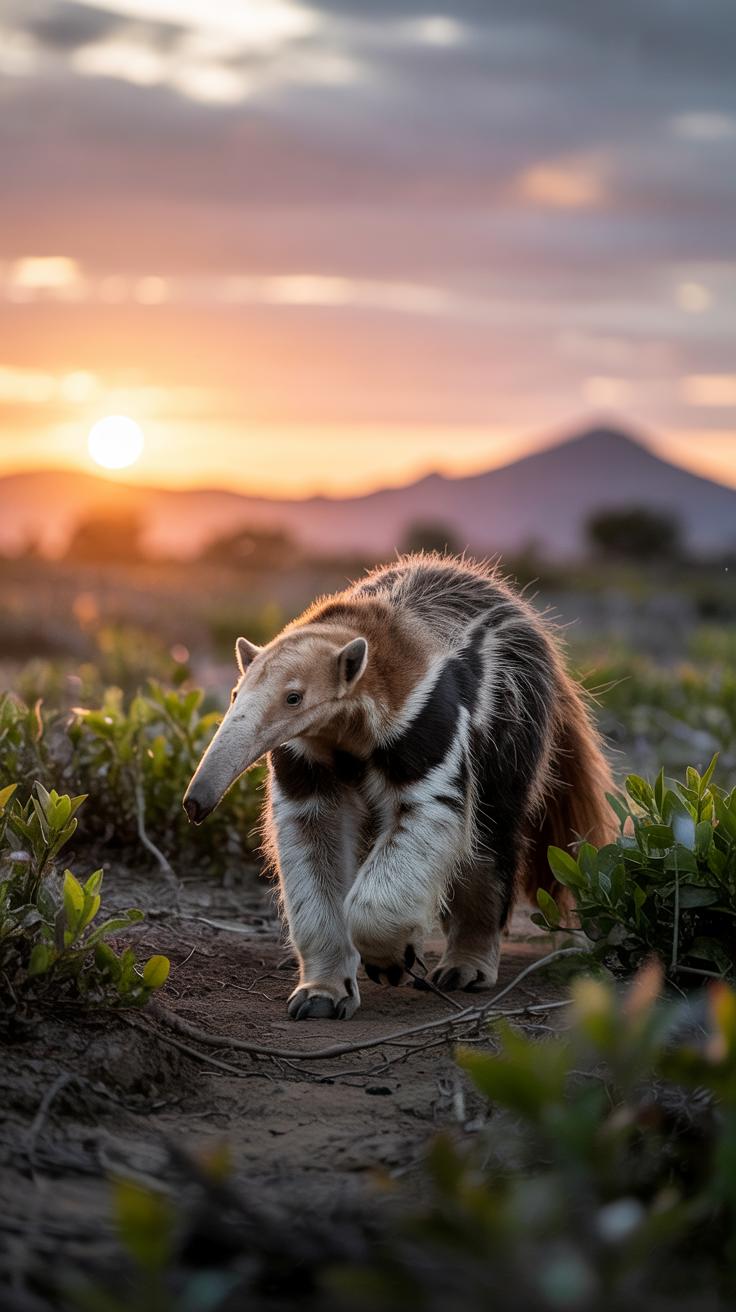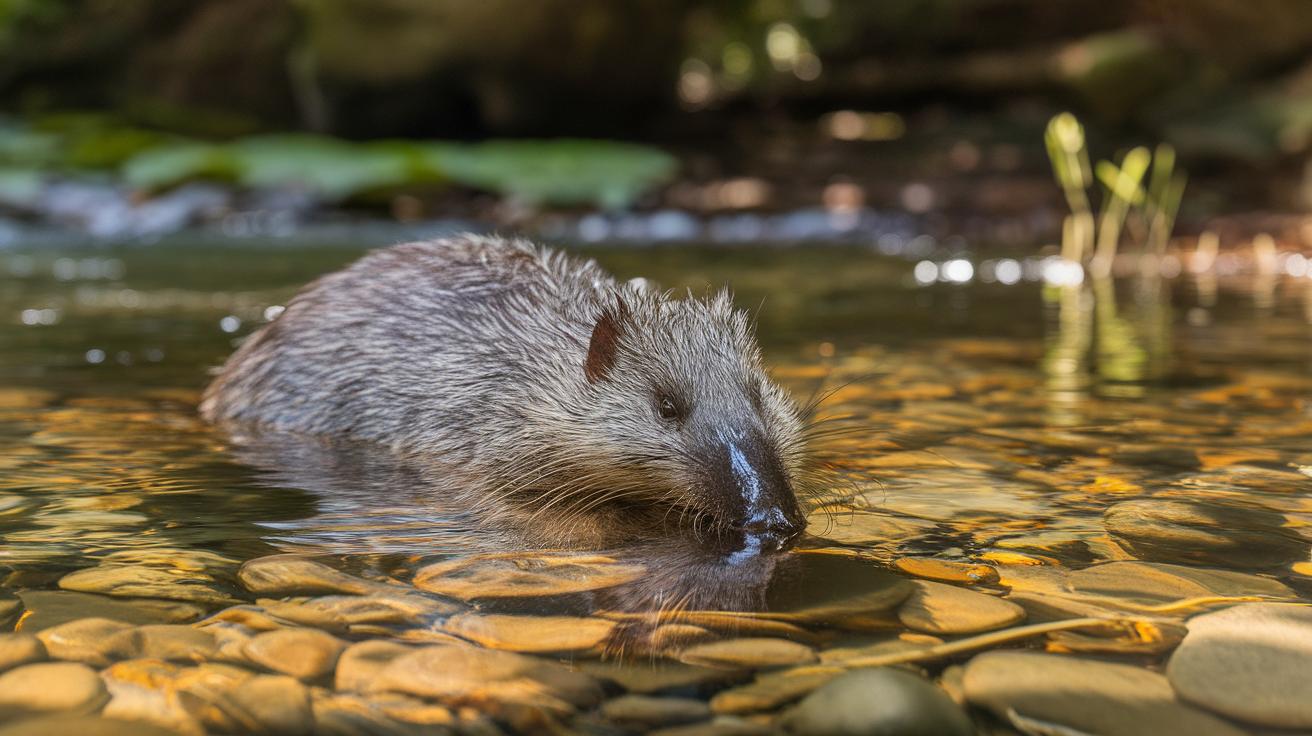Introduction
Anteaters, fascinating creatures belonging to the suborder Vermilingua, demonstrate unique adaptations that allow them to thrive in diverse environments across Central and South America. Renowned for their distinctive diet, which primarily consists of ants and termites, these mammals are not just remarkable for their feeding habits; they also possess a range of evolutionary traits that ensure their survival in the wild. The four extant species—giant anteater, silky anteater, northern tamandua, and southern tamandua—each exhibit unique characteristics and behaviors that highlight their ecological importance.
The survival strategies of anteaters are deeply intertwined with their habitats. They roam through grasslands, rainforests, and various terrains, showcasing their adaptability. As solitary animals, they have developed specific ways to compete for food and evade predators. Understanding anteaters is not just about appreciating their peculiarities; it involves examining their role in maintaining the ecological balance. The challenges they face, including habitat destruction and poaching, are critical factors to consider in the ongoing efforts to conserve these intriguing animals.
Understanding the Anteater Family Insight into Nature and Survival
The anteater family, known scientifically as Myrmecophagidae, comprises four extant species, each with unique characteristics and habitats. These species include the giant anteater (Myrmecophaga tridactyla), the southern tamandua (Tamandua tetradactyla), the northern tamandua (Tamandua mexicana), and the silky anteater (Cyclopes didactylus). Taxonomically, anteaters fall under the order Pilosa, which also includes sloths. This order is noted for its specialized adaptations primarily geared towards a diet of ants and termites.
Anteaters have a fascinating evolutionary background, tracing their origins back to the early Cenozoic era. Their adaptations, such as elongated snouts and specialized tongues, enable them to thrive in varying environments, from grasslands to rainforests. The evolutionary journey of the anteater family highlights a unique approach to survival, emphasizing a specialized diet and ecological niche that plays a crucial role in maintaining the health and balance of ecosystems.
Anatomical Features of Anteaters Unique Adaptations for Survival
Specialized Characteristics
Anteaters possess a range of distinctive anatomical features that have evolved to support their specialized feeding habits. Their elongated snouts are perhaps the most remarkable, allowing them to probe deep into ant hills and termite mounds with ease. This adaptation minimizes their exposure to predators while maximizing access to their primary food sources.
Feeding Mechanisms
The anteater’s tongue, which can extend up to 16 inches, is covered with a sticky saliva that effortlessly captures small insects, ensuring an efficient feeding process. This unique tongue operates without bones, contributing to its remarkable flexibility. Moreover, their large, curved claws serve multiple purposes. Not only do they dig into the hard structures of ant hills, but they also offer protection against threats. These adaptations collectively enhance anteaters’ survival within their ecosystems, enabling them to thrive in diverse environments, from grasslands to rainforests.
Habitats and Lifestyle of Anteaters
Exploring Various Habitats
Anteaters thrive in diverse ecosystems, each uniquely influencing their behavior and survival strategies. Found primarily in the tropical forests, savannas, and grasslands of Central and South America, these creatures are adaptable yet specific in their habitat choices. In dense forests, anteaters utilize the thick vegetation for protection against predators and to access the rich ant and termite colonies. Conversely, in open grasslands, their foraging methods differ, as they cover larger distances, employing their powerful limbs to unearth prey hidden beneath the surface. Such variability highlights their ecological adaptability, allowing them to fulfill the role of natural pest controllers across different environments.
Lifestyle Adaptations
The lifestyle of anteaters varies significantly based on their surroundings. Forest-dwelling species, such as the giant anteater, tend to be more solitary, relying on their keen sense of smell to navigate the dense underbrush. In contrast, those inhabiting grasslands may exhibit more nomadic tendencies, seeking out seasonal food sources. Their foraging habits require significant daily movement, reflecting the dynamic nature of the habitats they occupy. Each regional variant further emphasizes how these fascinating mammals have tailored their survival tactics, adjusting to the availability of resources and the challenges posed by their environments.
Feeding Ecology and Diet of Anteaters
Primary Food Sources and Feeding Methods
Anteaters primarily consume ants and termites, showcasing specialized feeding adaptations that enable them to thrive in their chosen habitats. Their elongated snouts house a long, sticky tongue that can reach several inches, allowing them to extract prey from nests and mounds efficiently. With powerful claws, these mammals can dig into hard surfaces to access their food sources, demonstrating remarkable foraging skills. Each day, an anteater can consume thousands of insects, playing a crucial role in regulating ant and termite populations within their ecosystems.
Ecological Impacts of Feeding Behavior
The feeding behavior of anteaters contributes significantly to the ecological balance of their environment. By controlling insect populations, they prevent overgrazing and help maintain soil health, which enhances plant diversity. As anteaters forage, their movements aerate the soil, promoting nutrient distribution that benefits numerous species. This interaction is essential for sustaining the delicate balance of their habitats, illustrating the importance of anteaters not only as predators but also as vital contributors to ecosystem stability. Their unique feeding ecology highlights the interconnected relationships within nature’s tapestry.
Reproduction and Lifespan of Anteaters
Mating Behaviors and Rituals
Anteaters exhibit unique mating behaviors that typically occur during the breeding season. Males attract females through vocalizations and scent markings, which convey their readiness to mate. Once a female shows interest, the pair engages in a courtship ritual that may include circling each other and playful interactions. Mating can occur multiple times over several days, allowing for a greater chance of successful reproduction. The elaborate nature of these rituals reflects the species’ adaptation to ensure genetic diversity and healthy offspring.
Caring for Offspring
The gestation period for anteaters averages about 190 to 200 days, culminating in the birth of a single infant, although twins are occasionally observed. After birth, the mother is primarily responsible for nurturing the young. The offspring clings to the mother’s back for several months, allowing it to stay safe while she forages. This close bond is vital for the cub’s survival, as it learns essential skills and feeding techniques from the mother. As the young anteater matures, it begins to explore independently, yet remains under the mother’s care for nearly a year.
Threats to Anteater Survival Habitat Loss and Climate Change
Major Threats to Anteaters
Anteaters face significant challenges that threaten their survival in the wild. Habitat loss is one of the primary threats, driven by deforestation for agriculture and urban development. This loss of natural environments not only reduces the availability of critical food sources but also fragments anteater populations, making it harder for them to find mates and reproduce. Poaching presents another pressing issue, as some regions view anteaters as a source of bushmeat, further endangering their numbers.
Climate change exacerbates these problems, altering ecosystems and food availability. Changes in temperature and rainfall patterns can impact ant and termite populations, leading to food shortages for anteaters. Addressing these threats requires urgent attention, as they jeopardize the fragile balance of ecosystems where anteaters play a vital role in controlling insect populations.
Conservation Efforts for Anteaters Protecting Their Habitats and Future
Collaborative Initiatives for Anteater Conservation
Various organizations and governments are actively involved in conservation programs aimed at safeguarding anteater species and their ecosystems. The primary focus is on habitat restoration, creating protected areas, and promoting sustainable land use. For instance, initiatives in the Amazon promote reforestation efforts to support wildlife corridors, enhancing anteater mobility and breeding opportunities. Additionally, community-based programs educate local populations on the importance of preserving anteater habitats, ensuring these creatures are valued for their role in maintaining ecological balance.
Research and Monitoring Programs
Ongoing research is vital for understanding anteater behavior and habitat requirements. Conservationists utilize tracking technologies to monitor anteater movements, which assists in identifying critical habitats and migration patterns. These monitoring efforts enable targeted conservation strategies, effectively addressing threats like habitat degradation. Partnerships with universities and wildlife experts facilitate comprehensive studies, providing data necessary for effective policy-making and implementation of protective measures. With a commitment to preserving anteaters, these concerted actions strive to enhance their chances of survival in an increasingly challenged environment.
Cultural Significance of Anteaters Representation and Beliefs
Indigenous Perspectives and Folklore
Anteaters hold a significant place in the mythologies and folklore of various indigenous cultures across the Americas. In some tribes, these unique animals symbolize diligence and wisdom, often representing the connection between soil and sustenance. The Guarani people, for example, weave the anteater into their cosmology, believing it embodies the spirit of the forest and acts as a guardian of land. Such cultural representations highlight the anteater’s role as a vital species, intertwined with the landscape and the cultural narratives that shape human understanding of nature.
Modern Portrayals and Ecological Awareness
Contemporary representations of anteaters in media and art often emphasize their quirky characteristics and ecological importance. They serve to raise awareness about biodiversity and environmental challenges. Characterized as gentle giants, anteaters appear in animated films and children’s books, capturing the imaginations of younger generations and inspiring conservation efforts. By showcasing these elements, modern portrayals can foster a sense of responsibility for preserving the habitats that support this fascinating creature. Such narratives align with ongoing initiatives aimed at protecting anteaters, highlighting their significance beyond mere curiosity, as cultural icons within broader environmental contexts.
Future Prospects for Anteaters Insight Into Nature and Survival
Speculating on Anteater Species and Their Habitats
As various anteater species face threats from habitat loss and climate change, ongoing research indicates a critical need for conservation efforts tailored to their unique ecological roles. The decline in ant and termite populations, driven by environmental changes, directly impacts anteater survival. Conservation scientists are exploring habitat corridors that would allow these specialized mammals to migrate safely between fragmented environments, ensuring access to food sources and promoting genetic diversity.
Potential Conservation Actions and Their Impact
Engaging local communities in conservation initiatives features prominently in sustainable strategies for anteater protection. By fostering awareness and providing resources for sustainable land use, communities can contribute to the preservation of anteater habitats. Partnerships with conservation organizations could help mitigate human-wildlife conflicts and promote coexistence. Research regarding the interactions between anteaters and their environments remains vital, offering insights that could guide effective conservation measures, thereby securing a future in which anteaters thrive alongside a balanced ecosystem.
Conclusions
The world of anteaters reveals an intricate balance of nature, marked by the delicate interplay between an animal and its environment. Their specialized adaptations, from their elongated snouts to their powerful claws, illustrate how evolution shapes the survival of species. By understanding these mammals, we gain insight into the broader ecological systems of which they are a crucial part. Their primary diet of ants and termites also plays a vital role in controlling insect populations, thus maintaining ecosystem health.
As threats to their existence continue to grow, including habitat loss and human activity, it is essential to emphasize conservation efforts aimed at protecting anteater habitats. Learning about these species will help raise awareness and foster a deeper connection to nature and wildlife. By preserving anteaters, we safeguard not just a species, but the intricate web of life that benefits all creatures and the ecosystems they inhabit.




